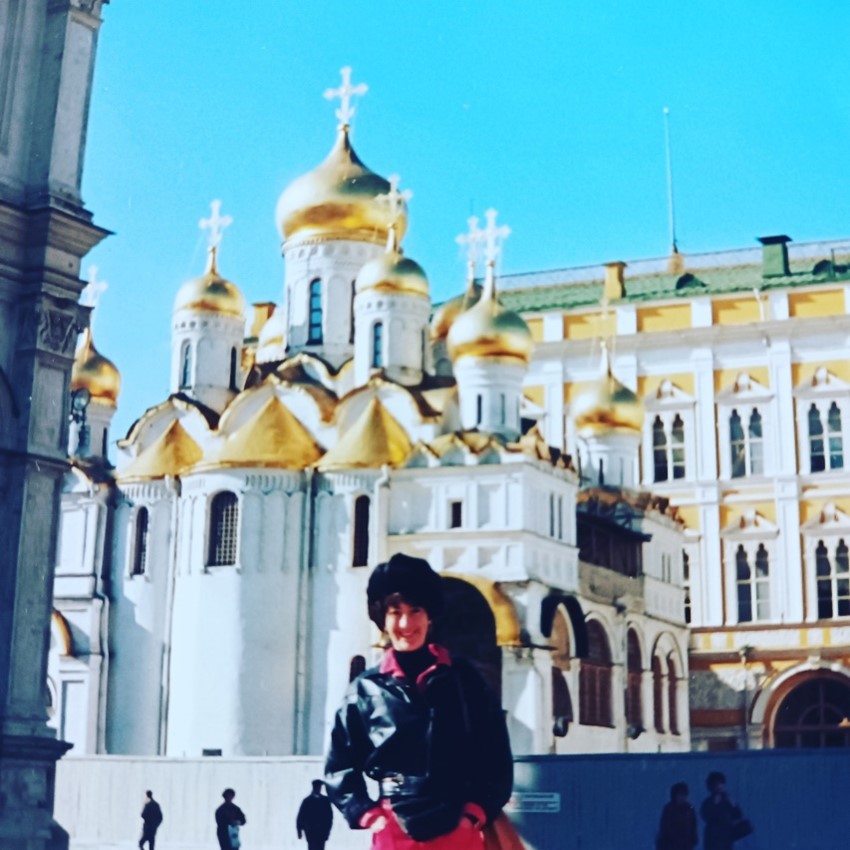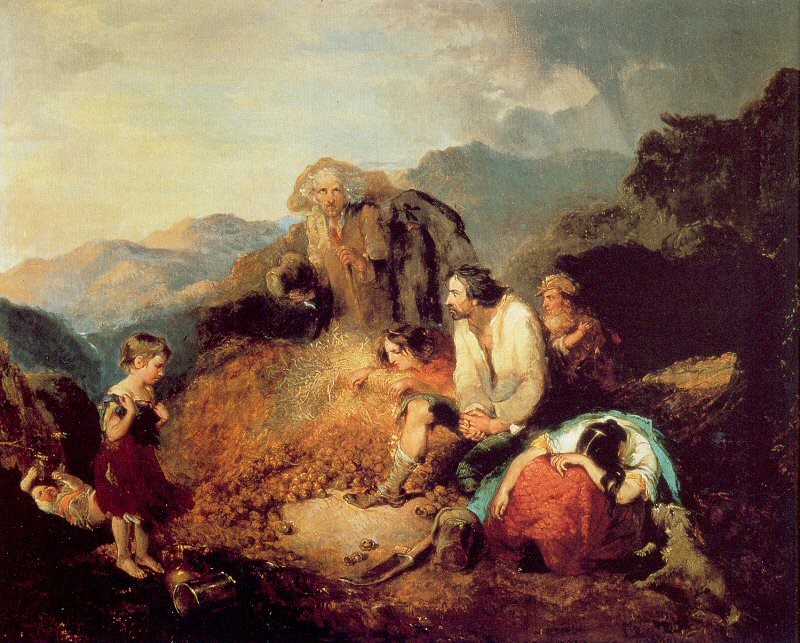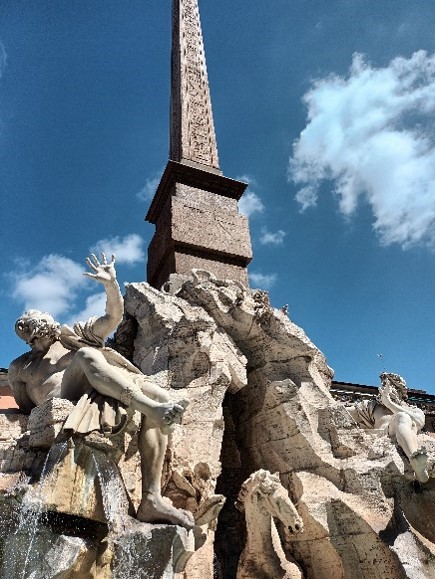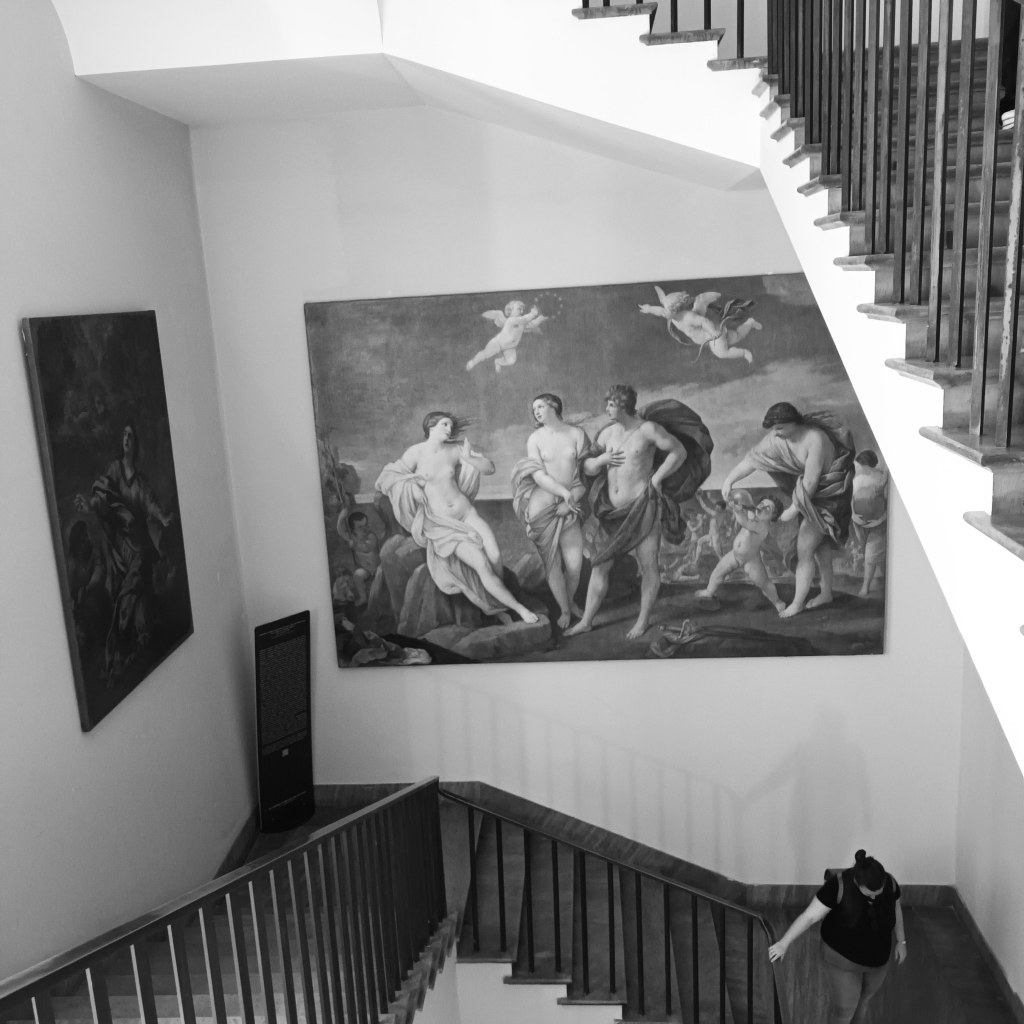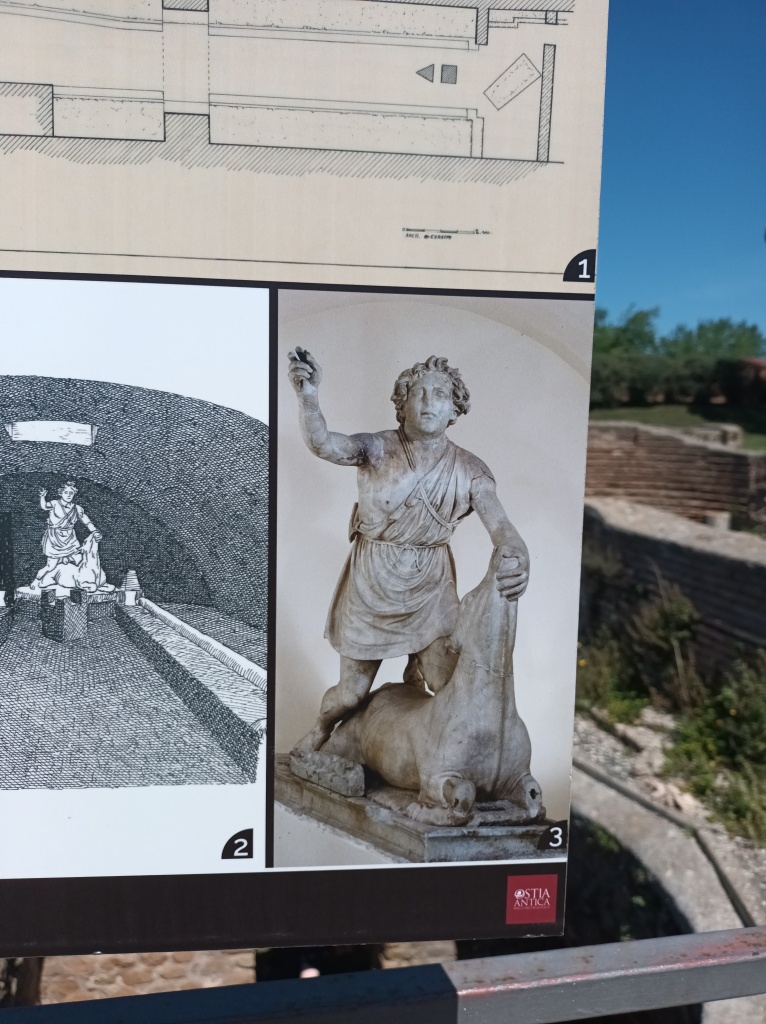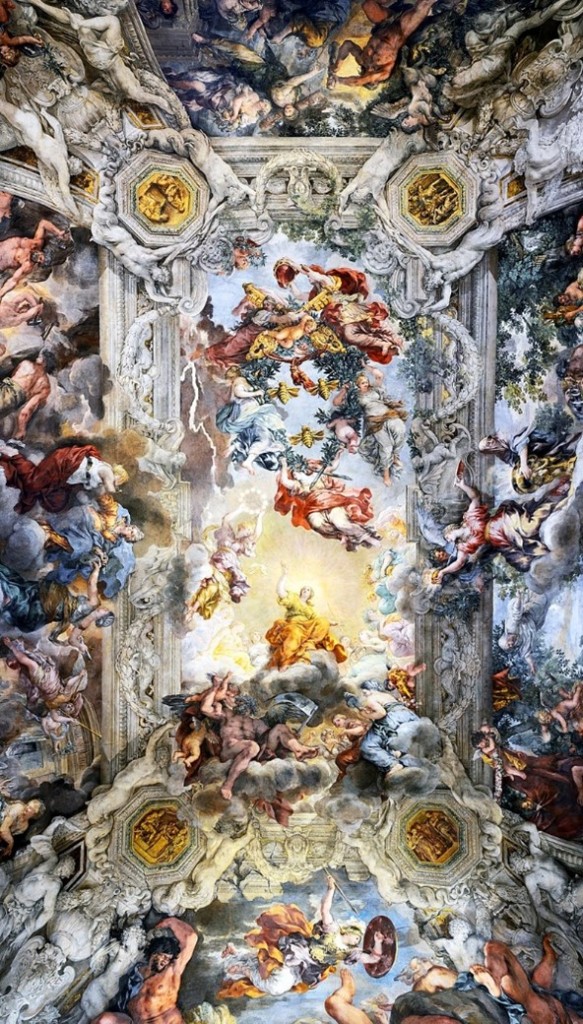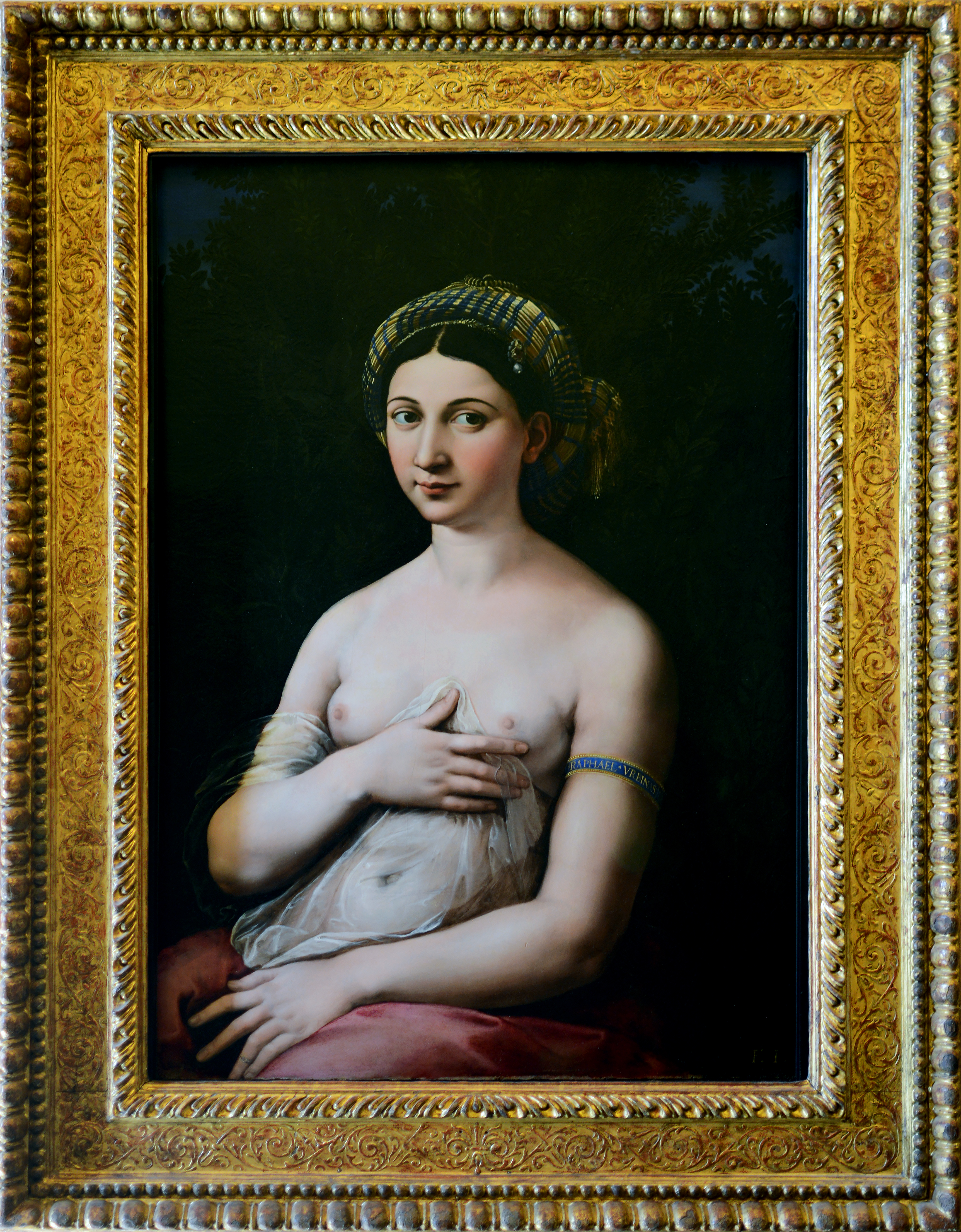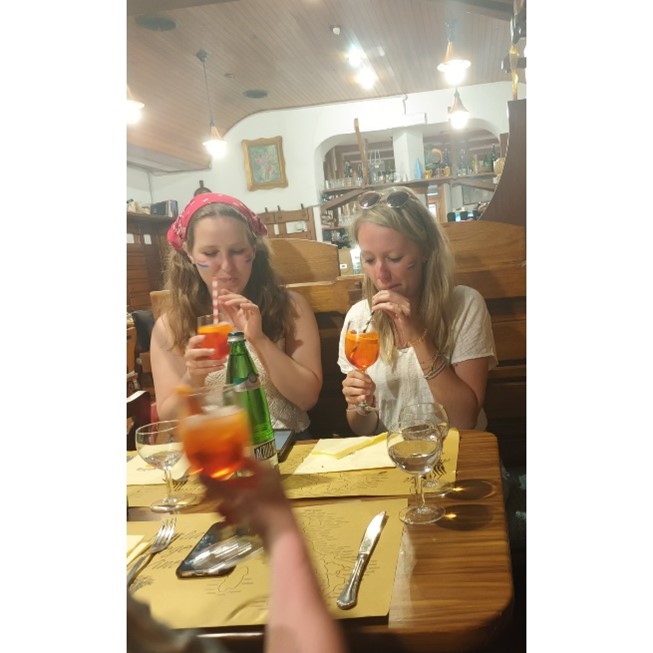
Henri Fantin-Latour, Hommage à Delacroix (1864), Paris, Musée d’Orsay
Standing in front of this incredible painting, at the Musée d’Orsay on Friday March 17th , I felt a shiver run down my spine. Édouard Manet stands on the right of the painting of Delacroix and James McNeill Whistler stands on the left. The writer and poet Charles Baudelaire is seated to the right of Manet. 1 Manet’s brother was married to Berthe Morisot, and Whistler was a close friend of Sir John Lavery, both of whom I will discuss in this blog. For a few moments, as I stood there, I felt I was standing in the company of the Impressionists ….and Others.
I have been to Paris many times. I lived there when in my late teens and had my life unfolded differently that is where I wanted to settle. I was back and forth often in the years I had my boutique and café on fashion buying trips. So, the opportunity to go in March on a five-day art-historical field trip, to my favourite city, really excited me, as I would see the city through a different lens.2
We visited many museums but what I have decided to do in this blog is to focus on a selection of works I saw during my trip that left an impression. Not only did I feel I ‘met’ the Impressionists, but their work made a greater impression on me and I was introduced to ‘other’ artists whose work I had not seen or thought deeply about before. I will discuss the works that caught my attention, not in any order of style or period, but following our itinerary each day through the various museums. I will attempt to connect what attracted me and what perhaps might connect the pieces that interested me to each other, bearing in mind it is a very personal selection and reflects my own aesthetic tastes and interests.
Where better to start than with the Louvre which we visited early on the Monday morning of our trip. Housed in the Louvre Palace the building dates to the late 12th , early 13th centuries, under Philip II . Skipping through a few generations, in 1682 Louis XIV decided to move the royal household to the Palace of Versailles, so the Louvre became, from this point, primarily a place to display the royal collection, including, from 1692, a collection of ancient Greek and Roman sculpture. It was used by many emerging artists who came to sit and draw from and study the art it housed. I wished I could have strolled through the rooms and gasp at the splendour of the collection that reflect centuries of different artistic styles and cultural traditions.
So why, from this enormous collection, did Jacques-Louis David’s The Oath of the Horatii from 1784-1785 engage me?. One reason was reading a fascinating article about the work, by the art historian Norman Bryson, from his book Tradition and Desire (Cambridge University Press, 1984) over Christmas, which provoked my interest in the painting. Bryson looks at how David ‘manipulated’ (the word he uses) artistic traditions, to create something new and different in the context of his time. Inspired by the ideas of the Enlightenment which challenged, among other things, the authority of the Monarchy and the Church, David’s work was strikingly different to the Rococo style appreciated by the bourgeoisie up to that point. Instead, David sought to capture a simplicity in art that came to be called ‘neoclassicism’, a style that mirrored a growing sense of democracy emerging in France.
The other reason is that I could see the sadness in the women seated on the right, in particular the woman wearing an off-white dress. Her name is Camilla. The story is a tragic one and one David captures in a unique way. The painting depicts a scene from a Roman legend about a seventh-century BC dispute between two warring cities, Rome and Alba Longa bringing to mind some themes I covered in my series of blogs about my field trip to Venice and Rome last year. It depicts perhaps the courage that comes with patriotism and self-sacrifice for one’s country. David’s painting shows three brothers from a Roman family, the Horatii as they take their swords, from their father, who, by his slightly reclining position suggests his age and vulnerability in the face of their obvious strength and appearing fearlessness. We do not see the three brothers from the other side, the Curiatii from Alba Longa all three of whom will die in the confrontation that will soon happen, and only one of the Horatti, Publius will survive.

Camilla, his sister, who I mentioned above, is to marry one of the Curiatii fighters. We can imagine how distressing this situation is for her. She knows that whatever happens she will lose someone she loves. What she does not know is that she too will die when her brother, Publius, the ‘victor’, kills her for crying over the death of her betrothed. Bryson uses a merged feminist and semiotic approach to analysing this aspect to the painting: ‘ David’s Camilla and the women around her are placed outside the register of speech’ he writes ‘which belongs exclusively to the males; drained, exhausted, hardly capable of sustaining the weight of their own bodies , the women are unable to mobilise any resource of language or image that might challenge the males.{They} cannot produce an image capable of acting within male vision; all they can do is become the site of a male look that apprehends the female as passive before vision, the object and for the male gaze’’ 3 Her dress style is considered typical of ancient Rome – a flowing long white-grey dress that again became popular in the late 18th century, in the neoclassical period, when many travellers on the Grand Tour took an interest in all things connected to ‘antiquity’.
The painting is also interesting in that the perspective David uses is unique for the time. He deploys a style that reminds one of the frieze found in many Greek and Roman buildings, an entablature that might be decorated or plain (especially in the Tuscan order, as used in the background of the Oath ) , a style that privileges plane over volume.

This compliments the theme David is depicting and again differentiates his work from that of his predecessors, such as Jean-Honoré Fragonard’s (1732-1806) Rococo style which privileges volume over plane. I choose to mention Fragonard because of his connection to Berthe Morisot. Morisot’s paternal grandmother, Elisabeth Duchêne, was the great-niece of Jean Honoré. Of course , the blushing lady in her elegant white gown is beautifully rendered by Fragonard for the Countess Du Barry who commissioned the series.
Our next museum visit on Monday is the Musée de L’orangerie. We walked through the Louvre gardens enjoying the early Spring vibe in the air. This museum is famous largely because of Monet’s ‘Water Lilies’ which take up several rooms in the building. I was much more impressed by his works which we saw the following morning at the Musée Marmaton and I will mention one that stood out to me later.
It was a work by Henri Rousseau that caught my attention at the L’Orangerie:

Perhaps it was the woman in the white dress who looks like she is detached or removed from the painting that caught my eye. I was due to give a presentation the following day on two paintings by the Irish born artist Sir. John Lavery, at the Musée Rodin, and the white dress motif was part of my discussion. Of course, this is a very different picture to Lavery’s but I believe it has elements in common with other Impressionists who deploy a somewhat similar design. The museum web site writes that ‘at first sight, we are faced with the photographic portrait of a wedding. The protagonists in street costume pose for the photographer. However, curiously the bride seems to be floating in the air’. (my translation) She immediately reminded me of one of the ladies in Manet’s Le Balcon which I will discuss below.
When I did some research on the La Noce I began to understand Rousseau’s style capturing a transition that came after Impressionism. He is considered to have influenced artists such as Henri Matisse and was exhibited at the ‘Salon des Indépendants’. 4 He is also considered to have influenced ‘The Fauves’, a movement at the turn of the 20th century, characterised by dramatic brush strokes and bright colors like we see in the backdrop of the wedding portrait above. ‘The Fauves’ are considered to have some overlaps with the post-impressionist works of Van Gogh and the Pointillism of Seurat or Signac.5
If all that was not a lot to take in on our first full day, we move from the Musée Orangerie to a most beautiful house situated a little further out in the city – Le Musée Jacquemart-Andre, a private museum located on Boulevard Haussmann in the 8th arrondissement of Paris. 5 This house belonged to Édouard Andre (1833–1894) and his wife Nelie Jacquemart (1841–1912) who was a society painter, to display the art they collected during their lives. They particularly loved Italian and Venetian art and travelled each year to Italy to purchase works.
Some of us arrived a little early at the museum and decided to get a coffee before our tour. I have to say the café in the house really left an impression.

It is particularly beautiful, and I could have sat there for hours ‘people watching’, alone. When I turned my eyes towards the ceiling in the room, I thought to myself ‘that painting looks a lot like Tiepolo’ but I felt I must be mistaken as I did not realise that there were works by the famous Venetian artist at the house. Last year I did a presentation at the Ca’ Rezzonico , a palazzo museum on the Grand canal in Venice and it included a discussion of Tiepolo’s work held there at the museum. I subsequently discovered that this was a Tiepolo, acquired by the Andrés, transported with other pieces from Venice to Paris, a complicated task, to remove, transport, and reinstall in the family’s mansion.

This fresco by Giambattista Tiepolo depicts a scene connected to French history – the arrival of Henry III (of Italian descent through his mother Catherine de’ Medici) in Venice in 1574. He would succeed his brother, Charles IX, as King of France. He was received in Venice by the Doge Contarini. The fresco was praised by the Gazette des Beaux-Arts in 1896: ‘No other work by Tiepolo could be closer to our hearts, as it seems to have been created for us. The last great Venetian painter and an episode in the history of France: is this not the finest possible blend of everything Venetian and French?’ .7 The large mural panel was placed by the couple at the top of their stairway dramatically depicting the French sovereign walking up the steps of the villa in Venice.
Faithful to what had been agreed between her and her late husband, Nelie Jacquemart bequeathed the mansion and its collections to the Institut de France as a museum which opened to the public in 1913.
Tuesday morning some of us decided to go to the Musée Marmottan. Originally a hunting lodge for the Duke of Valmy, the building at the edge of the famous Bois de Boulogne was purchased in 1882 by Jules Marmottan, who later left it to his son, Paul Marmottan. Paul expanded his father’s collection of paintings, furniture and bronzes and bequeathed his home and collection, at the end of his life, to the Académie des Beaux-Arts. The house and collection opened to the public as the Musée Marmottan in 1934. I originally heard about this museum because of an exhibition they had in 2021/22 centring on the artist Berthe Morisot’s only daughter Julie Manet.

Laura Marlowe writes in her coverage of the exhibition in The Irish Times in 2021 that ‘Morisot was the first woman impressionist, the only female represented at the movement’s inaugural exhibition in 1874. Because she could not frequent cafés, Morisot held a weekly salon at her home in Passy, in Paris’s 16th district. Julie grew up surrounded by great artists: her mother, her uncle Édouard Manet, Edgar Degas, Claude Monet and Pierre Auguste Renoir’. 8

Acclaimed for her portraits of women and children, though she also did some landscapes, the painting I really like from her collection is this one of her husband Eugène Manet overseeing their daughter Julie in the park. Morisot had a rigorous training as an artist and was courageous enough to explore form, bridging , as some have pointed out, a gap between the drawings of Renoir and the paintings of Monet. 9 This painting touched me because 0f the gentleness of the scene and the tenderness one sees between the father and his only child. It is important to add that Manet was incredibly supportive of his wife and her artistic career encouraging her and supporting her, something that was most unusual at the time, possibly even still is, to this day.
Another incredible part of this museum is the collection of works by Claude Monet.

The colours and the vividness of this work brought me close to tears, also the way in which he used his brush strokes to create the effect of the flower’s unique colours.
Our next stop on Tuesday is an important one for me. We were on route to the Musée Rodin and we would look at the sculpture by Auguste Rodin and those of Camille Claudel , but also some of the works he collected, including two by Sir. John Lavery. I am currently writing a thesis about Sir John Lavery’s wonderful painting The Artist’s Studio, from the National Gallery of Ireland collection.

There are two beautiful works by Lavery at the museum, one on the staircase, ‘ Summer’ which you see above, the other, ‘Ms. Eileen Lavery’ from 1906 was in storage but I want to discuss it here, because it links to many themes in this blog, including my discussion of Henri Rousseau, La Noce from 1905 above and Manet’s Le Balcon 1868-69 which I will discuss at the end. It connects to a tradition that leads back to Diego Velázquez’s work Las Meninas.

This is a portrait of John Lavery’s daughter Eileen. Eileen’s mother, John’s first wife, had died when she was very young. There is much to discuss about this painting but before I do so let me read what Rodin wrote to Lavery when he received it as a gift from his London-based friend: ‘I do not know how to thank you for your picture’ he wrote ‘ There is so much art in its discretion. I am embarrassed at the praise you give me, and I hope you realise how grateful I am. Your devoted friend , August Rodin’.10
One aspect of this painting is particularly of interest to me and that is the tradition from which the popularity of painting girls and women in white or lightly toned dresses emerged -Velázquez’s painting Las Meninas.

At the centre of this famous painting is Margaret-Theresa who was born on 12 July 1651 in Madrid, the first child of King Philip IV of Spain from his second marriage with his niece Mariana of Austria .Velázquez’s work became a model for 19th century realist and impressionist painters, and several sought to capture something of his achievement, focusing on how he represented the Infanta. Whistler, for example, in his painting ‘Harmony in Gray and Green : Miss Cicely Alexandra’ was directly influenced by Velázquez.

In the opening picture by Henri Fantin-Latour we saw James McNeill Whistler and Édouard Manet standing on either side of a portrait of Delacroix. Not only Whistler, but Manet was influenced by Velázquez and, in an article, entitled ‘American Artists’ taste for Spanish Painting’ Barbara Weinburg looks specifically at the influence on Whistler. ‘Harmony in Gray and Green: Miss Cicely Alexander (is) a canonical display of Whistler’s mature portrait style and his manner of enlisting inspiration from Velázquez, recall(ing) the Infanta Margarita as she is seen in the detailed photograph of Las Meninas that Whistler owned’ 11 The art historian Richard Dorment highlights another important point about this tradition. He argues that Whistler, I quote ‘took the most sentimentalized Victorian subjects, motherhood and childhood, and created works in which painterly values took precedence over narrative content’ 12.
There are many similarities between Whistler’s portrait and that of Lavery’s painting at the Rodin museum– the shimmering white dress, so popular at this time and the muslin fabric which captured the light so beautifully, bedazzling our eyes. The portrait is a development from Lavery’s earlier 1902 portrait of his daughter ‘Her First Holy Communion’.
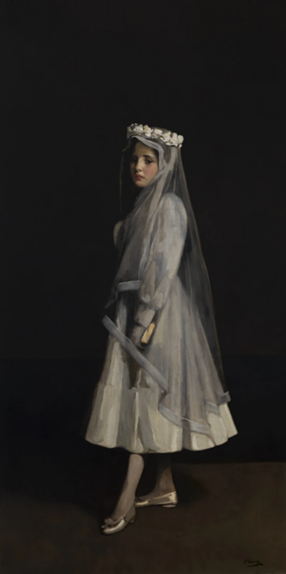
Her First Communion,
1902, Dublin, National Gallery of Ireland
Lavery writes about this earlier portrait of his daughter in a white dress in his autobiography. Whistler, he writes ‘ came to my studio and looking at a portrait of a little girl in white – certainly influenced by his Miss Alexander ..remarked that the white frock was too high in key for the flesh tone and asking for some charcoal. He rubbed it in the hollow of his hand , then rubbing his finger in this, proceeded to tone the white paint on the picture in the most delicate manner possible conveying to me the impression that my work was too coarse and crude and preventing me from painting with any vigour for nearly a year afterwards, possibly for many years’. 13 We can see that by the time of the 1906 portrait at the Rodin Museum he had eventually overcome his anxieties, capturing the child’s elegant disposition, the effect of light as it fell on her face and dress and overall tone of the composition situates it firmly in the tradition I have outlined. Linking the white dress motif to other works I saw on my field trip will demand more academic rigorous analysis that I cannot do here – my argument is that there was clearly an awareness of the importance of capturing the female figure in white, in a striking position on the canvas, shared by Manet, Whistler, Lavery, Rousseau and possibly others whose work I have not seen or studied adequately yet.
There is a room at the Rodin Museum dedicated to the work of his student Camille Claudel. Often interpreted as an autobiographical work by Claudel, the piece below is suggested to illustrate Rodin hesitating between his ageing wife and his young lover. This beautiful sculpture captures Claudel’s destiny as much as Rodin’s, forgotten, as she was, by him, her teacher and her family.

Image: Denise Meagher
She ended up spending the bulk of her life in a psychiatric hospital in the South of France. The man in the sculpture is being pulled away from the young woman who is imploring him to stay. The man is said to represent age and death, the woman perhaps, youth or vulnerability.
On Wednesday we visited La Bourse de Commerce, which houses the contemporary art collection of Francois Pinault, a similar type of collector to Charles Saatchi but Pinault favours artists he likes and has followed for a long time and does not try to be intellectual about his collection. 14 While my own artistic tastes are more inclined towards the nineteenth and early 20th century, I was, once again, struck by one artist’s work at this museum – CW Twomley (1928-2011) . His work reminded me of Carolyn Quartermaine, whom I have loved for years and who inspired some of my own fashion and interior designs. She is considered an avante-garde artist who blurs boundaries between art and design.

I am not sure if Quartermaine would consider Twombly an influence but he is certainly considered to have influenced younger artists such as Jean- Michel Basquiat. His works are typically large-scale, dripping, scribble-like and calligraphic. He also uses flower motifs which interest me, though clearly very differently to the way Monet uses them in the piece discussed earlier.

Coronation of Sesostris (2000) is a painting cycle in ten parts. The museum site explains it was begun in Italy, and completed in Virginia and it combines Twombly’s ‘graphic inventiveness and poetic sense of history, rhythm, and elision’.15 His paintings are considered to represent a modern day “romantic symbolism”, using flowers, forms and words. The flowers drew me in. Twombly often quotes poets such as Stéphane Mallarmé and John Keats as well as classical myths and allegories, in his works. An interesting aside but Berthe Morisot asked the poet Stéphane Mallarmé to be her orphaned daughter’s guardian, and her friends Degas, Monet and Renoir to be Julie’s advisers, when she was very ill with pneumonia in her early 50s.
Next stop was the Centre Pompidou, a landmark building designed by Richard Rogers and Renzo Piano, who despite stiff competition and not being a French firm, got the contract to design the building in the early 70s. It is situated in the Beaubourg area of the 4th Arrondissement, near the Marais.

The work that captured me here was the installation pictured above by Louis Bourgeois. Bourgeois’s work deals with themes of childhood, intimacy, and sexuality, using both a feminist and a psychoanalytic approach. Last year I studied Bourgeois in a different module on curating as I was working on a hypothetical exhibition project about the designer Simone Rocha who, I believe, is strongly influenced by the fashions we see in Impressionist art. Rocha herself, however, claims it is Louise Bourgeois, in particular, who inspires her designs. I still cannot see this connection, but that aside, this work intrigued me.
The explanatory panel in the museum describes this installation as follows: ‘Precious Liquids explores the mechanics of body fluids (sweat, tears, urine etc) secreted in response to a strong emotion. Maternity is suggested by the liquid on the bed. The coat, hung in a phallic manner, symbolises the authority of the father. The inscription on the metal band: Art is a guarantee of sanity’ reveals the artist’s guiding thought’. I am looking into this space in the photograph above, which allows me the capacity to see inside. In this large old wooden water tank, I am drawn in, perhaps because I see loss and terrible pain, connected to my own experience of miscarriage.
Though a completely different work with different themes, the colour palette of Bourgeois’s installation is similar to the work that caught my attention at our next and final stop of the day -– the Picasso Museum close to the Centre Pompidou, in the Marais.
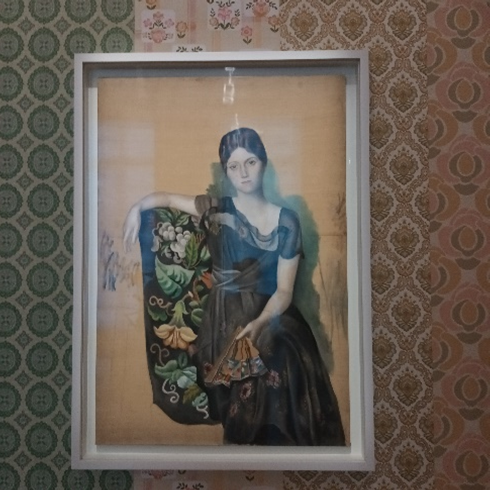
In 1918, Picasso made the acquaintance of Serge Diaghilev a Russian art critic, patron and ballet impresario, founder of Ballets Russes which produced many famous dancers and choreographers. Through him he meets Olga Khokhlova, a chorus girl and they married. Picasso’s new muse starts influencing his style and he moves away from cubism, a style he had embraced, and turns for a while towards a more realistic manner of painting. The flower pattern reminded me again of Rousseau discussed earlier and I loved the colour palette and the dress style and fan motif. The way he positions her hand has echoes of some of Manet’s works.
The highlight of Thursday was Musée du Petit Palais. So many amazing works to choose from here, I will stay on the theme of dress, in this instance, like the previous work, a composition that uses a palette of browns and blacks. If white dresses have been a theme throughout my blog, here is an exceptional example of a black one. Born in Switzerland Giron trained in Paris and first showed his work at the Salon of 1876. He was particularly gifted at portraiture as we can see in this beautiful work.

The museum web site explains the work as follows: ‘Ready to go out, La Parisienne wears an afternoon dress whose jet embroidery and velvet applications enhance the intense black. The drapes arranged on the hips are inspired by the 18th century basket dress, the art of which was then brought up to date by major Parisian collectors. The presence of a console in gilded wood in the Rococo style confirms the citation of the century of Louis XV, while the interlacing wall decoration foreshadows the floral contours of Art Nouveau’. Simone Giron, who donated this large painting to the Petit Palais, knew this work well, which her father, Charles Giron, apparently had a special place for in his heart. It is this portrait of a woman buttoning her long mauve glove. Her dress is very elegant, still using a bustle (a padded undergarment used to add fullness or support to drapery, at the back of women’s dresses I the mid to late 19th century). 16
Finally, then, to remind us of my opening image I want to show you this later work by Henri Fantin-Latour, A Studio at Les Batignolles (1870) if just to present, like Claudel’s sculpture captures, the passage of time, showing how Manet appears to have aged and to point out the presence of Monet at the back corner, to the right and Renoir standing behind Manet. Manet’s work has intrigued art historians and volumes have been written about him. He is of much interest to academics outside the field of art history – both Michel Foucault and Pierre Bourdieu have written and lectured about him, an amazing fact given their respective fields of expertise in philosophy and sociology. 17

There are so many aspects to his work ‘The Balcony’, that demand attention but again, I point to the ladies in white. The one on the right, I think you might see now, has similarities to the woman in Rousseau’s work we looked at earlier.

The woman seated looking out is Berthe Morisot who posed for this painting. She looks somehow more ‘real’ than the other woman standing beside her who appears detached or removed, less authentic. All those in the painting are gazing in different directions making us wonder what in fact each one is looking at?. Foucault, in a lesser-known lecture he gave, translated into a book by Matthew Barr, gives a very interesting perspective on the significance of this work and of the white and black tones. He argues that the painting is a deliberate ‘inversion of the quattrocento formula where figures carry colour and larger architectural features are plunged into shade’. Foucault continues: ‘Here you have the exact opposite. The figures are in black and white and the architectural elements , instead of being swallowed up in semi darkness, are on the contrary exalted and accentuated in a way by the garish green of the canvas’.18 He presents Manet’s work in a similar way to how he interpreted an earlier masterpiece by Velázquez, arguing that both artists challenged the techniques associated with the Italian Renaissance, the quattrocento; both their works reflected a rupture in the context of their respective times, artistically, and both make the viewer more aware of the materiality of the work of art, as art, as representation.
To begin and end with Manet is by no means to underestimate the ‘others’, discussed here or the women who were lesser known such as Berthe Morisot and Camille Claudel. Despite the challenges they faced, in being seen, both finally received the recognition they deserved. Their ‘courage’, as gifted woman, still inspires me today and informs my enduring love of Paris and this fascinating period of art history, where traditions changed, and new styles emerged, including, of course, Impressionism.
REFERENCES
1 Left of the portrait of Delacroix are pictured Louis Cordier, Louis Edmond Duranty, Alphonse Legros , Henri Fantin-Latour, James Abbott McNeill Whistler , and to the right of the portrait are: Champfleury , Édouard Manet , Félix Bracquemond, Charles Baudelaire , and Albert de Belleroy.
2 Museums that we visited that I do not discuss in this blog are the medieval ages (Musée de Cluny); architectural gems (Cite de Architecture et du Patrmoine); an ethnographic museum (Musée de Quai Branly); and the Musée d’art Modern de Paris, the origins of the building as part of the 1937 International Exhibition of Arts and Technology in Modern Life is important to its history.
3Bryson, Norman, Tradition and Desire, Cambridge University Press, 1984 pp 74. I am not sure I entirely agree with his argument, however.
4 The Société des Artistes Indépendants (Society of Independent Artists) or Salon des Indépendants was formed in Paris on 29 July 1884. The association began with the organization of massive exhibitions in Paris, choosing the slogan “sans jury ni récompense” (“without jury nor reward”). Georges Seurat and Paul Signat were among its founders.
5 In 1884 Signac met Monet and Seurat . He was struck by the systematic working methods of Seurat and by his theory of colours and he became Seurat’s supporter. Both artists would be considered Neo-Impressionists. Under Seurat’s influence Signac abandoned the short brushstrokes of Impressionism to experiment with scientifically juxtaposed small dots of pure color, intended to combine and blend not on the canvas, but in the viewer’s eye, the defining feature of divisionism or Pointillism .
6Georges-Eugène Haussmann, commonly known as Baron Haussmann (1809–1891), was a French official chosen by Emperor Napoleon III to carry out a massive urban renewal programme of new boulevards, parks and public works in Paris.
7 Information available on the museum’s official website.
8 see Lara Marlow “The Last Manet : Julie Manet was the living legacy of Impressionism” Irish Times, Nov 20th , 2021
9 Sinead Furlong-Clancy discussed this in her recent series of lectures on ‘Impressionism and the Painting of Parisian Modernity’, Winter 2023, the National Gallery of Ireland.
10McConkey, Kenneth. This really fascinating information about the exchanges between Lavery and Rodin are in footnotes to chapter three of the book. See pp, 225
11Weinberg, H Barbara ‘American Artists’ Taste for Spanish Painting’ in Manet/ Velázquez’ in The French Taste for Spanish Painting, The Metropolitan Museum of Art 2003 pp 265
12 Ibid pp 269 referring to Dorment in London-Paris-Washington 1994-95, pp 140. This statement alone could take up a ten-minute discussion – the differentiation between ‘narrative content’ and ‘painterly values’ brings us right back to Wölfflin‘s (1864-1945) ‘particulars of art’ – but I won’t digress there.
13 McConkey, Kenneth, Sir John Lavery: A Painter and his World Atelier Books Ltd., 2010 pp 81
14 Francois Pinault is considered a similar type of collector to Charles Saatchi. See Agnes Poirier article: ‘How the French Charles Saatchi became the Merchant of Venice’ in The Guardian, Wed June 3rd 2009
15 In his Histories, Herodotus recounts the conquests of the Egyptian pharaoh Sesostris, who led an army northward overland to Asia Minor, fighting his way westward until he crossed into Europe, where he defeated the Scythians and Thracians. In Twombly’s interpretation, this war-making, world-building ancient figure is a given fantastical meta-narrative, depicted in the arc of a single blazing day in Egypt from sunrise to journey’s end.
16 Giron presented at the annual exhibition of the Société Nationale des Beaux-Arts in 1883. The catalog of the retrospective exhibition presented at the Museum of Fine Arts in Bern in 1955 gives her the emblematic title of “La Parisienne” – which ‘suits this elegant woman with a pretty mischievous profile, highlighted by the hat covered with black marabou feathers’.
17 Its staging evokes the studio of French painter Édouard Manet and represents him seated and painting. Seated beside him Zacharie Astruc . The other figures from left to right are painters Otto Scholderer, Pierre- Auguste Renoir, Emile Zola (bearded with eyeglasses in his hand), Edmond Maitre, Frederik Bazille (profiled) and Claude Monet.
18 Foucault, Michel, Manet and the Object of Painting. Translated by Matthew Barr, Tate Publishing, 2009



